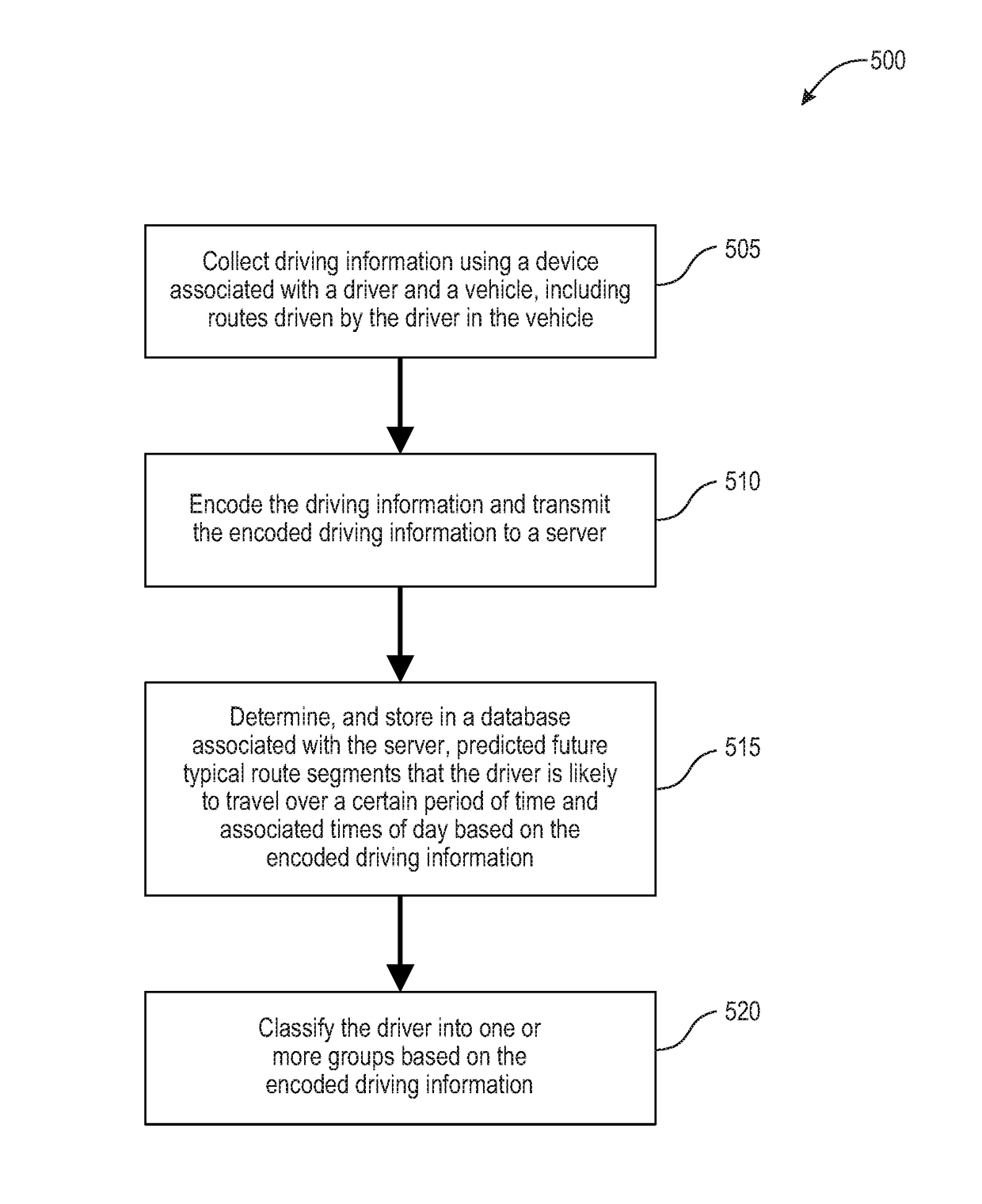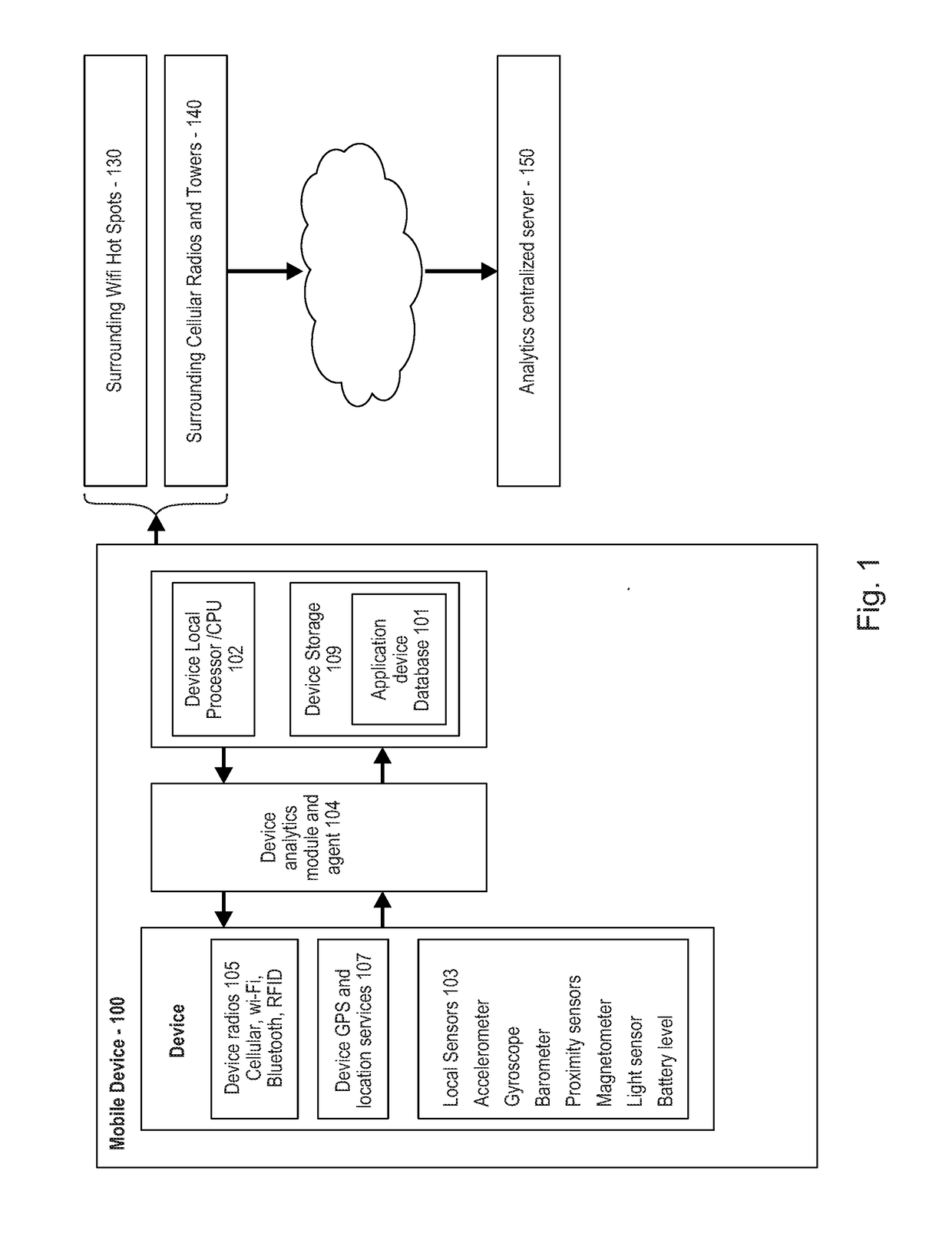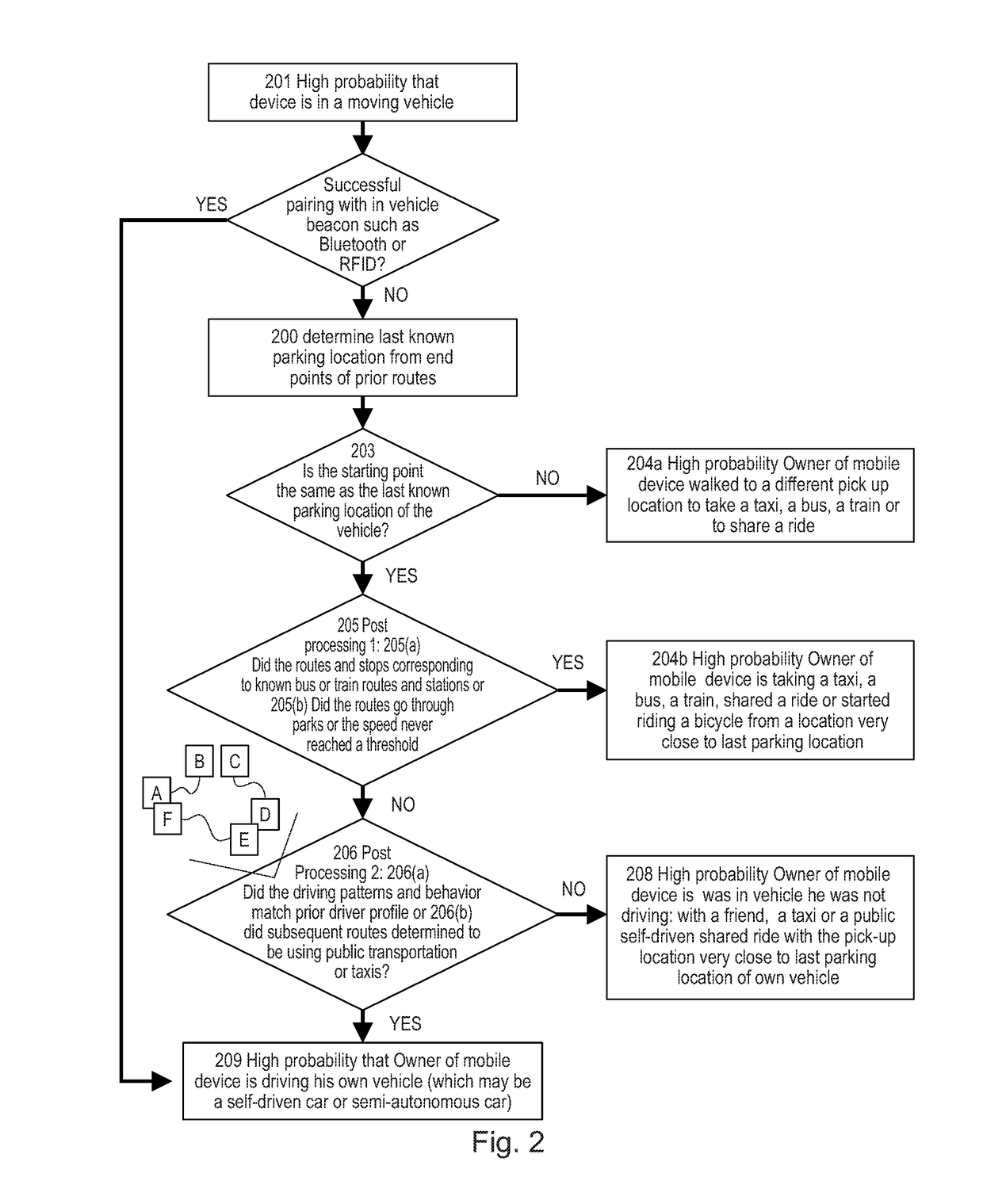Methods and systems for collecting driving information and classifying drivers and self-driving systems
a technology for self-driving systems and driving information, applied in the field of methods and systems for collecting driving information and classifying drivers, can solve the problems of limited tracking and the rudimentary nature of the art methods and systems used to understand the amount of driving done by individuals, and achieve significant bandwidth and battery savings, minimize the amount of data transmitted, and reduce the effect of cos
- Summary
- Abstract
- Description
- Claims
- Application Information
AI Technical Summary
Benefits of technology
Problems solved by technology
Method used
Image
Examples
Embodiment Construction
[0027]A description of example embodiments of the invention follows.
[0028]The disclosed systems and methods can be used to manage driver profitability profiles for certain products and services and exchange of information with cloud-based systems. The methods and systems can generate information and profiles associated with routes driven or expected to be driven, targeted content delivery in anticipation of routes driven, and predict demographics and profitability of drivers or fleets of self-driven cars for specific products and services. The disclosed methods and systems can be used by various intermediaries, sales agents, brokers, ad networks, and service providers to determine and classify the potential profitability of certain individuals or groups of individuals or fleets of vehicles for specific products and service based on prior historical routes driven and to deliver to those individuals content or promotional offers and information tailored to those individuals' interests...
PUM
 Login to View More
Login to View More Abstract
Description
Claims
Application Information
 Login to View More
Login to View More - R&D
- Intellectual Property
- Life Sciences
- Materials
- Tech Scout
- Unparalleled Data Quality
- Higher Quality Content
- 60% Fewer Hallucinations
Browse by: Latest US Patents, China's latest patents, Technical Efficacy Thesaurus, Application Domain, Technology Topic, Popular Technical Reports.
© 2025 PatSnap. All rights reserved.Legal|Privacy policy|Modern Slavery Act Transparency Statement|Sitemap|About US| Contact US: help@patsnap.com



